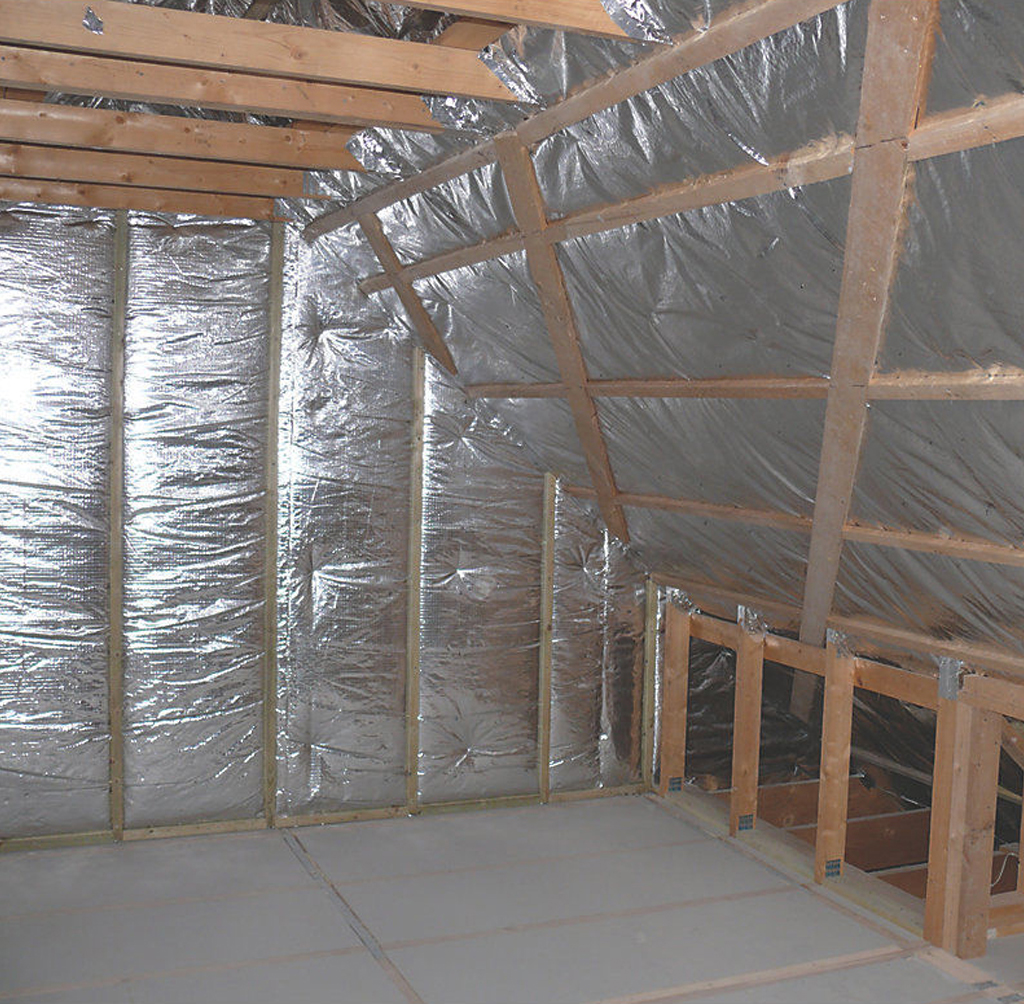Everything You Need to Know About Foil Roof Insulation
Everything You Need to Know About Foil Roof Insulation
Foil roof insulation is a modern and versatile insulation option designed to improve the energy efficiency of buildings. In this comprehensive guide, we will dive deep into the world of foil insulation, discussing its benefits, how it works, and how it compares to other insulation types. Additionally, we will touch upon the BreatherQuilt product and its advantages for reroofing projects. This is why we’ve put this guide to show you everything you need to know about foil roof insulation.

What is Foil Insulation?
Foil insulation, also known as reflective insulation or multifoil insulation, is a high-performance insulation material made from multiple layers of reflective aluminium foil, thermo-foam, and polypropylene (or wadding). These layers work together to reflect heat and trap air, preventing heat loss and maintaining a comfortable indoor temperature.
Foil insulation can be installed in various parts of a building, including walls, floors, and roofs. It is particularly effective in foil roof insulation applications, where it can help minimize heat loss or heat gain through the roof.
How Does Foil Insulation Work?
Foil insulation works by reflecting heat and preventing it from transferring to the other side of the insulation panel. The aluminium foil layers have a low emissivity (E-value), meaning they reflect a significant amount of radiant heat. This reflection helps to maintain a consistent, comfortable temperature within the building.
The air trapped between the foil layers also contributes to the insulation’s effectiveness. Known as “dead airspace,” this trapped air provides an additional layer of insulation, increasing the material’s overall thermal resistance.
5 Benefits of Foil Insulation for Roofs
- Energy Efficiency: Foil roof insulation can significantly improve the energy efficiency of a building by reflecting up to 95% of heat and preventing heat transfer through the roof. This results in lower heating and cooling costs and contributes to a more sustainable and eco-friendly building.
- Easy Installation: Foil insulation is lightweight and flexible, making it easy to install in various roof types, including pitched and flat roofs. Its slim profile also makes it an ideal choice for retrofitting older buildings or working in tight spaces.
- Moisture Resistance: Unlike some traditional insulation materials, foil insulation is resistant to moisture and condensation. This helps to prevent mould growth and related issues, ensuring a healthier indoor environment.
- Vapor Barrier: Foil insulation can also act as a vapor barrier, preventing moisture from entering the building through the roof. This is particularly beneficial in humid climates, where excess moisture can lead to structural damage and other problems.
- Durability: Foil insulation is designed to be long-lasting and resistant to wear and tear. Its multi-layered construction provides added strength and stability, ensuring that the insulation continues to perform well over time.
Foil Insulation for Reroofing Projects
When it comes to reroofing projects, foil insulation offers several advantages. One such product, the BreatherQuilt, is a 2-in-1 breathable membrane and multifoil insulation solution that can enhance the energy efficiency and comfort of a building.
BreatherQuilt is made from 11 layers of perforated, highly reflective aluminium foil, wadding, and an outer fully waterproof breathable membrane. This combination allows moisture to pass from inside the building to the outside while preventing water penetration from the exterior. Its reflective foil layers also provide excellent thermal properties, making it an ideal choice for reroofing projects.
Comparing Foil Insulation to Alternative Forms of Insulation
Foil insulation stands out from alternative insulation types like PIR boards and mineral wool in several ways:
- Foil insulation is more lightweight and flexible, making it easier to install and handle.
- Its reflective properties provide superior thermal performance, reflecting heat and maintaining comfortable indoor temperatures.
- Foil insulation acts as a vapor barrier and is resistant to moisture, reducing the risk of mold and structural damage.
- It is non-toxic and environmentally friendly, unlike some traditional insulation materials.
How to Choose the Right Foil Insulation for Your Project
When selecting foil insulation for your project, consider the following factors:
- Location: Determine where the insulation will be installed (e.g., walls, floors, or roof) and the specific requirements for that area.
- Climate: Consider the local climate and the insulation’s ability to prevent heat loss or heat gain, as well as its moisture resistance.
- R-value: Evaluate the insulation’s R-value, which indicates its ability to resist heat flow. Higher R-values indicate better insulation performance.
- Certifications: Look for products that have been tested and certified by reputable organizations like LABC or BDA, ensuring compliance with building regulations and standards.
- Cost: Compare the cost of foil insulation with other insulation options and weigh the potential energy savings against the initial investment.
To contact one of our foil insulation specialists please call us on 0114 323 0012 or request a call back CLICK HERE.
Conclusion
Foil roof insulation is an innovative and effective solution for improving the energy efficiency and comfort of a building. Its reflective properties, moisture resistance, and easy installation make it an attractive choice for both new constructions and reroofing projects. With products like BreatherQuilt, you can achieve even better insulation performance and enjoy the numerous benefits of foil insulation.
By considering your project’s specific needs and comparing foil insulation to other insulation types, you can make an informed decision and invest in the best insulation solution for your building.
Everything You Need to Know About Foil Roof Insulation

